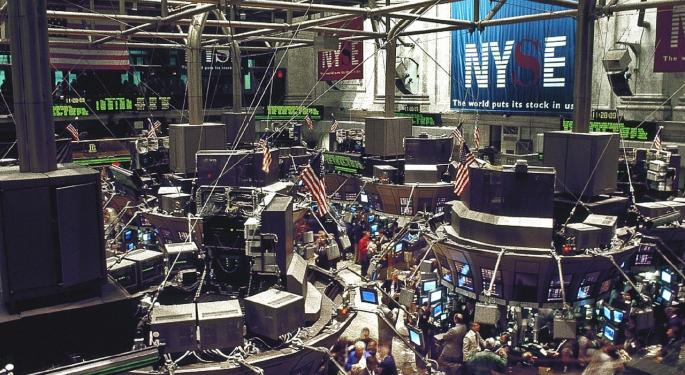Don't Hate On Buybacks, Buyback ETFs
Share repurchase programs have been an increasingly popular way for companies to deploy excess cash. Buybacks have also been increasingly vilified, as critics assert that the cash would be better used to reinvest the business, hire new workers, reduce debt or make acquisitions.
The companies that have been voracious buyers of their own shares and those looking to start new repurchase programs do not appear to be heeding that advice. On a combined basis, buybacks and dividends are expected to hit a record $1 trillion this year. For all the complaining about buybacks, it is widely documented that shares of companies that return cash to investor outperform peers that do not.
Track Record Of Buybacks
Goldman Sachs Chief U.S. Equity Strategist David Kostin recently told CNBC he expects companies that reward shareholders will outperform again in 2016.
As has been noted in this space, the PowerShare Buyback Achievers Fund (ETF) (NYSE: PKW), the largest buyback exchange-traded fund, has a lengthy track record of outpacing the S&P 500.
PKW And SPYB
“In today’s economic environment, I would argue that reinvesting 40 percent of free cash flow is a prudent use of capital. In addition, data from the National Science Foundation shows US business investment in research and development has risen in recent years, outpacing overall economic growth and historical trends,” said State Street Global Advisors (SSgA) Managing Director Michael Arone in a recent blog post.
“At the same time, data from the Federal Reserve shows private capital investment is increasing and stands at historically high levels of gross domestic product.”
SSgA issues the SPDR S&P 500 Buyback ETF (NYSE: SPYB), which debuted in February and now has nearly $10 million in assets under management. SPYB follows the S&P 500 Buyback, which is an equal-weight benchmark, ensuring the new ETF is not excessively exposed to just a small number of stocks. None of SPYB's 103 holdings commands a weight of more than 1.82 percent, and the ETF's top 10 holdings combine for just 12 percent of the fund's weight.
What's Driving The Buyback Boom?
Lot interest rates and surging corporate profits have been key drivers of the buyback boom.
“One of the factors driving the buyback trend is the incredibly accommodative monetary policy environment we’ve been in since 2008. Companies are taking advantage of the fact that the Federal Reserve has kept interest rates near zero to borrow money to buy back shares,” noted Arone. “Record corporate profits are also driving buybacks. Corporate profits are at an all-time high, having increased for the past six years.”
Like rival ETFs, SPYB is heavily allocated to the consumer discretionary and technology sectors. The former is SPYB's largest sector allocation and the pair combines for over 41 percent of the ETF's sector exposure. Financials, which have renewed shareholder rewards since the financial crisis, and industrials combine for another 36.6 percent of SPYB.
Image Credit: Public Domain
© 2025 Benzinga.com. Benzinga does not provide investment advice. All rights reserved.
Posted-In: Long Ideas News Broad U.S. Equity ETFs Specialty ETFs Intraday Update Markets Tech Trading Ideas Best of Benzinga



